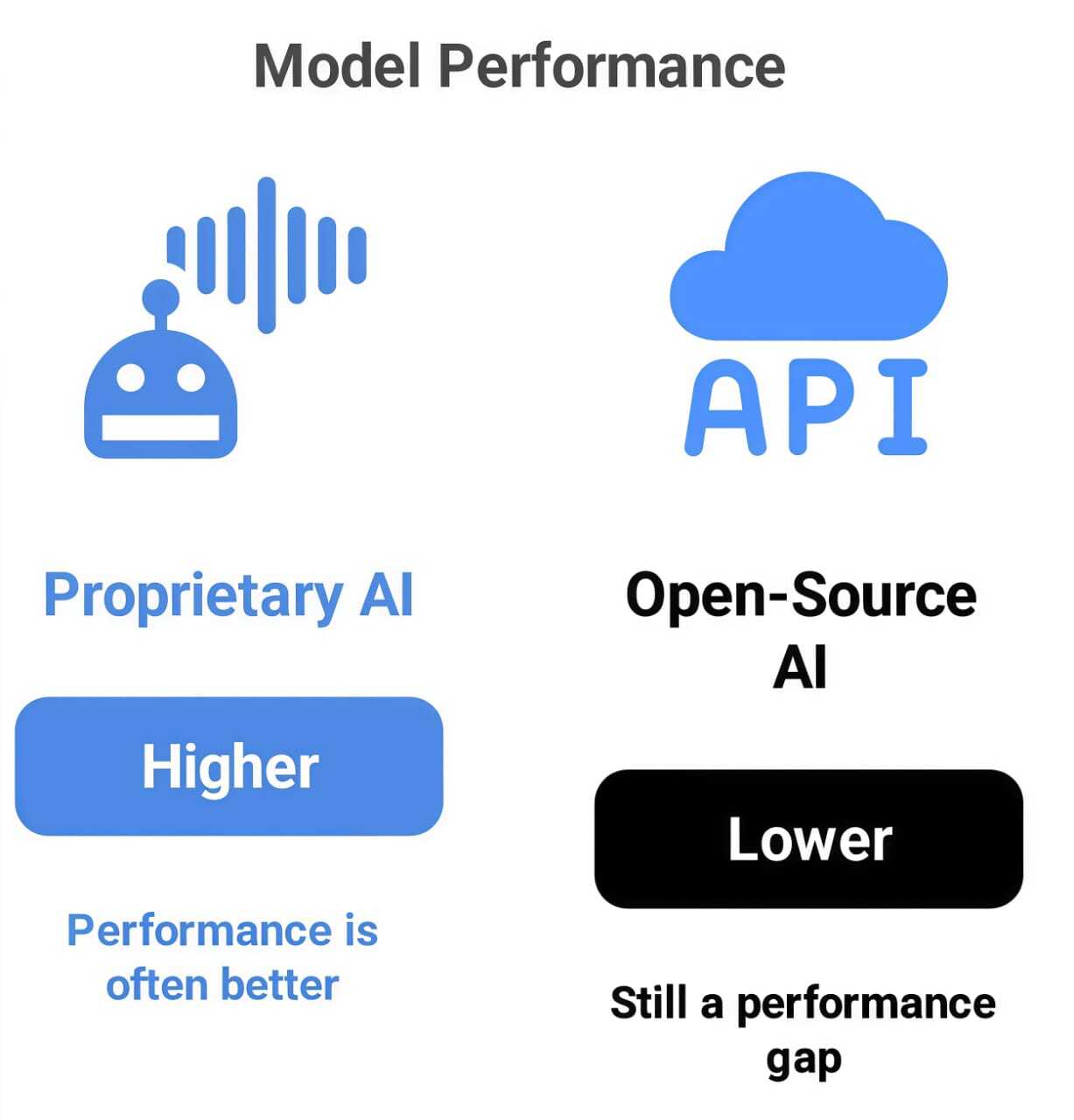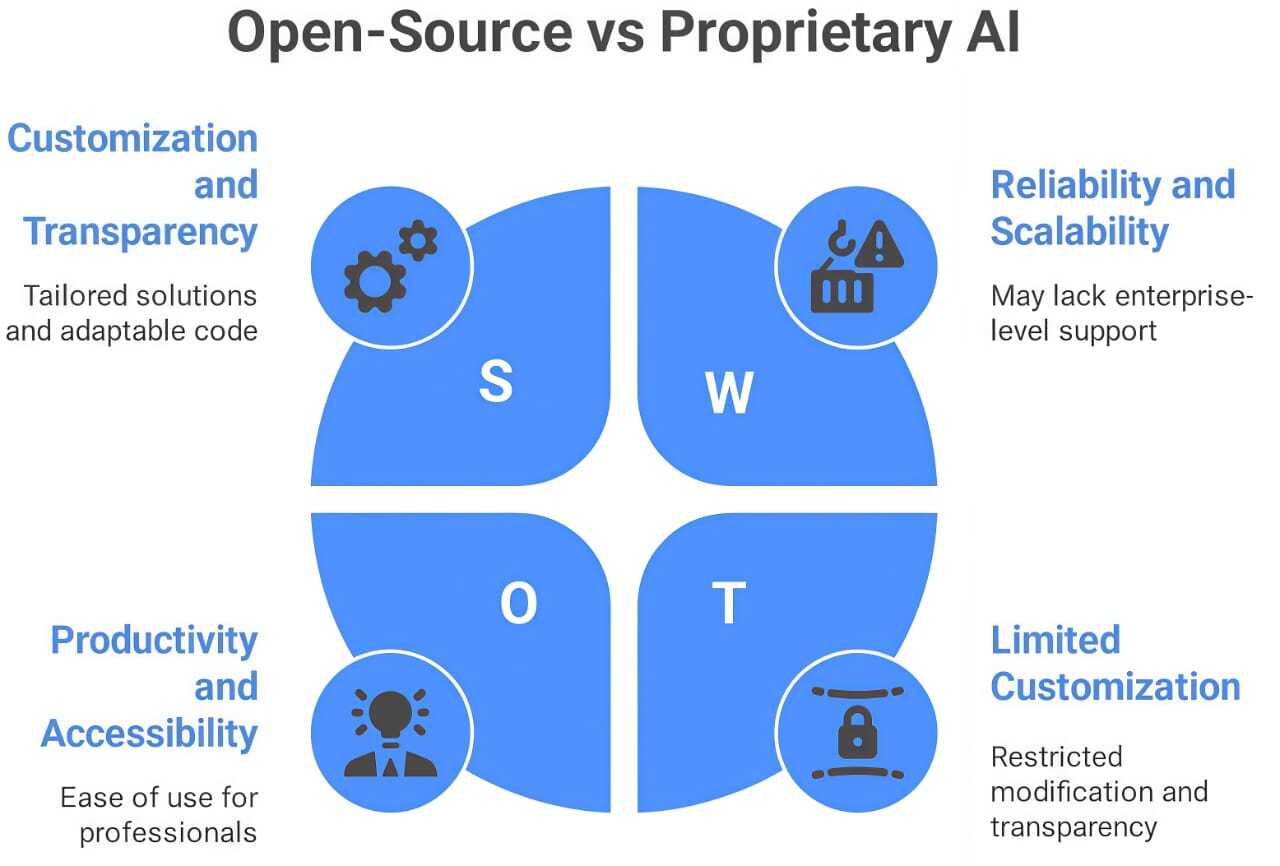- Explore My Collection of Essential AI Websites
- Posts
- Open-Source AI vs Proprietary AI — What Will Shape the Future?Deepthink AI Newsletter
Open-Source AI vs Proprietary AI — What Will Shape the Future?Deepthink AI Newsletter
As AI becomes the backbone of global innovation, the battle between open-source and closed AI models is heating up. But which one is actually leading us forward?
The AI Divide Is Growing — Open vs Closed

In 2025, AI is no longer just about how powerful the model is — it’s also about who controls it.
On one side, we have open-source AI: transparent, customizable, community-driven. On the other, proprietary AI: powerful, fine-tuned, and centralized.
As businesses, builders, and policymakers navigate the future, this choice is becoming more than just technical — it’s strategic.
⚖️ Comparison — Open-Source AI vs Proprietary AI

Here’s a simplified breakdown of how Open-Source AI compares to Proprietary AI, across key factors:
1. Access
Open-source AI is usually free or low-cost. It gives public access to model weights and allows full editing. On the other hand, proprietary AI is often restricted to paid APIs and closed systems. You can use it, but you don’t own it.
2. Speed of Innovation
With developers contributing worldwide, open-source models evolve fast through community collaboration. Proprietary AI also innovates quickly — but that progress is controlled internally by companies like OpenAI or Google.
3. Customization
Open-source gives full flexibility. You can fine-tune models for specific edge use-cases. Proprietary AI, however, is fixed to the company’s product roadmap. You get features when they release them.
4. Performance
Proprietary models like GPT-4 and Claude often lead in accuracy, speed, and scale. Open-source models are catching up fast, but there’s still a small performance gap in many tasks.
5. Data Privacy
If you self-host open-source AI, you have full control over your data. Proprietary tools usually send your data to their servers — a potential concern for privacy-sensitive use cases.
6. Industry Usage
Startups, individual devs, and researchers prefer open-source due to flexibility and cost. Meanwhile, enterprises and SaaS platforms mostly rely on proprietary tools for scale, reliability, and support
Who Is Using What — And Why?

Open-Source AI is ideal for:
Startups building custom AI solutions
Researchers experimenting at the frontier
Developers who need transparent, modifiable code
Proprietary AI suits:
Enterprises needing reliability and scale
Professionals using AI for productivity (e.g., writing, coding, design)
Non-technical users relying on ease and UI
The Global Trend
Meta is pushing hard with LLaMA.
Mistral & Falcon are open and powerful contenders.
Meanwhile, OpenAI, Google DeepMind, and Anthropic are doubling down on closed models with premium APIs.
Governments (like the EU) are regulating transparency and open-access compliance.
We’re at a turning point. The next five years could be defined by which approach earns more trust, adoption, and impact.
So… Which One Wins?

It’s not black and white.
Open-source drives innovation. Proprietary drives polish.
The most powerful future might be a hybrid, where companies blend open models with proprietary APIs — open for experimentation, closed for production.
What Do You Think?
Do you prefer the freedom of open-source or the power of proprietary AI?
Reply, react, or drop a comment — we read every one.
Stay sharp. Stay curious.
Reply